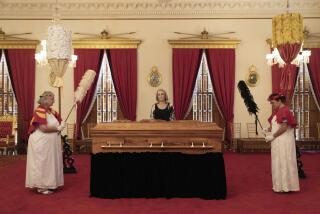Kapiolani Is Honolulu’s Crown Jewel
- Share via
HONOLULU — One speaks literally when saying that Honolulu’s Kapiolani Park is fit for a king.
About 100 years ago, before the islands were annexed by the United States, the tree-studded, 300-acre greensward was the private preserve of ruling royalty of the Kingdom of Hawaii. The royal family, after seeing public parks in Europe and the United States, decided to give the land to the people late in the 19th Century.
Today that legacy, named after former Queen Kapiolani, is still a geographic crown jewel in this city. At the base of Diamond Head and fronting on the golden beaches of Waikiki, Kapiolani Park remains a favorite retreat for the urbanized residents of Hawaii’s capital city.
But tourists--often by chance--also are discovering the great diversity of things to do and see in this unexpected green oasis. Most of Waikiki is one high-rise hotel after another. But Kapiolani Park at the southern end of hotel row is a vast open expanse.
One immediately notices the runners. Kapiolani is where the fleet feet like to meet. The options are attractive: running across the lush green--but firm--turf, or crisscrossing the shaded sidewalks that flank the park. The ocean borders one sidewalk at the park, and some runners end their workout by doffing their shoes and wading into the clear Pacific.
Other physical activities abound. Soccer games are frequent in Kapiolani. It also has ample areas for tennis and softball games.
For the couch potato there are acres and acres of trees to snooze under, following big island-style picnic lunches.
And for those wanting some interesting sightseeing there are several modestly-priced major attractions. One is the Honolulu Zoo near the intersection of Kalakaua and Kapahulu avenues at the south end of the park. The zoo, open daily from 8:30 a.m. to 4 p.m., has one of the world’s best collections of tropical birds. Admission is $3.
Across Kalakaua Avenue from the park is the Waikiki Aquarium, which features more than 300 species of ocean life. The aquarium is open daily from 9 a.m. to 5 p.m., and the suggested donation is $2.50 per person, with no donation asked of those under 16.
A free attraction in Kapiolani Park is the popular Kodak Hula Show, Tuesdays through Thursdays at 10 a.m. near the Waikiki Shell, an outdoor bandstand. The hula show allows visitors to photograph and videotape colorful dancers against a backdrop of palm trees and flowers. There are bleachers, but the seats fill up quickly. Gates for the hula show open at 8:30 a.m.
If one wants something more cerebral than hula music, the Waikiki Shell frequently offers weekend events of first-rate caliber. The Honolulu Symphony Orchestra plays at the bandstand, which is Honolulu’s version of the Hollywood Bowl. And, like the bowl, concert-goers enjoy picnics in their seats or on the ample grassy areas before the opening notes.
On a recent Saturday evening the Honolulu Symphony played Tchaikovsky. By the concert’s conclusion, stars overhead burned brightly as flares and a rousing version of the “1812 Overture” echoed off the stately rise of Diamond Head peak a few hundred yards away.
An outdoor concert, Kapiolani-style, is an unforgettable experience. Waikiki Shell concert tickets, which vary in price according to seating, are available daily at a ticket booth near the zoo.
Kapiolani also offers weekly shows by local artists. On Saturdays and Sundays the artists display their paintings on the outdoor fences bordering the zoo. Most of the display area is tree-shaded. The art ranges from bold seascapes to delicate, surrealistic designs. The artists, a friendly bunch, sit by their wares, glad to discuss their works . . . and their prices.
For more information about Kapiolani Park and travel to Hawaii, contact the Hawaii Visitors Bureau, 3440 Wilshire Blvd., Suite 502, Los Angeles 90010, (213) 385-5301.
More to Read
Sign up for The Wild
We’ll help you find the best places to hike, bike and run, as well as the perfect silent spots for meditation and yoga.
You may occasionally receive promotional content from the Los Angeles Times.





